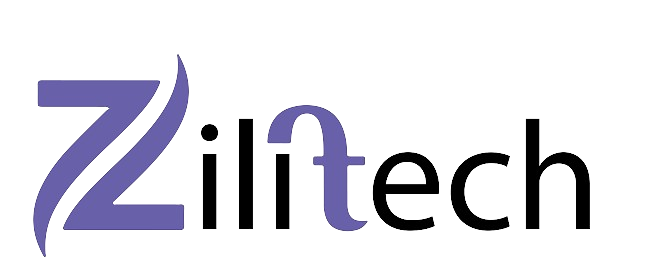Introduction
College life is bustling with activities, assignments, and social events. Communication is key to staying organized and connected. With the rise of digital tools, messaging platforms have become indispensable in colleges. They not only facilitate academic discussions but also enhance social interactions among students and faculty. In this article, we will explore the best college messaging platforms, their features, and how they can transform communication in an educational setting.
What Makes a Great College Messaging Platform?
User-Friendly Interface
A great messaging platform should be easy to navigate. Students and faculty should be able to send messages, share files, and create groups without a steep learning curve.
Security and Privacy
With sensitive information being shared, security is paramount. A reliable messaging platform should have robust encryption and privacy policies to protect user data.
Integration with Other Tools
Seamless integration with other tools like Learning Management Systems (LMS), calendars, and file storage services enhances the platform’s utility, making it a one-stop solution for various needs.
Cost-Effectiveness
Budget constraints are a reality for many educational institutions. A cost-effective solution that offers a good balance of features and affordability is ideal.
Top College Messaging Platforms
Overview
Let’s dive into some of the top messaging platforms that are making waves in colleges. We’ll compare them based on their features, pros and cons, and best use cases.
Slack
Features
Slack offers channels for organized conversations, direct messaging, and file sharing. It integrates with various apps and services, making it a versatile tool for both academic and extracurricular activities.
Pros and Cons
- Pros: Highly customizable, extensive integration options, easy to use.
- Cons: Can be pricey, especially for larger groups, limited free version features.
Best Use Cases
Slack is ideal for group projects, club communications, and departmental announcements. Its organizational capabilities make it perfect for keeping conversations focused and efficient.
Microsoft Teams
Features
Microsoft Teams provides chat, video conferencing, and file collaboration. It integrates seamlessly with other Microsoft Office tools, making it a comprehensive solution for colleges.
Pros and Cons
- Pros: Strong integration with Microsoft Office, robust security features, supports large groups.
- Cons: Can be complex to set up, requires a Microsoft 365 subscription.
Best Use Cases
Teams is best for formal academic communications, faculty meetings, and collaborative class projects. Its integration with Office tools enhances productivity.
Discord
Features
Originally designed for gamers, Discord offers voice, video, and text communication. It has servers and channels for organized discussions and integrates with various bots for added functionality.
Pros and Cons
- Pros: Free to use, customizable, supports large groups, fun and engaging.
- Cons: Less formal, can be distracting due to its gaming roots.
Best Use Cases
Discord is great for student clubs, informal study groups, and social interactions. Its user-friendly interface and engagement features make it a hit among students.
Features
WhatsApp offers simple text messaging, voice and video calls, and group chats. It’s widely used and easily accessible on mobile devices.
Pros and Cons
- Pros: Easy to use, widely adopted, strong encryption.
- Cons: Limited to mobile devices, less suitable for large groups.
Best Use Cases
WhatsApp is perfect for quick communications, small study groups, and staying connected with friends. Its simplicity and mobile accessibility make it a convenient choice.
Google Chat
Features
Google Chat integrates with Google Workspace, offering direct messaging, group chats, and file sharing. It works well with other Google tools like Drive and Calendar.
Pros and Cons
- Pros: Seamless integration with Google tools, easy to use, free with Google Workspace.
- Cons: Limited customization, requires a Google account.
Best Use Cases
Google Chat is ideal for academic communications, project collaborations, and faculty-student interactions. Its integration with Google Workspace enhances its utility.
GroupMe
Features
GroupMe offers group messaging with easy-to-use features. It supports text, image sharing, and even conference calls.
Pros and Cons
- Pros: Simple interface, no need for users to have the app, supports SMS.
- Cons: Limited features compared to other platforms, can be less reliable.
Best Use Cases
GroupMe is great for small groups, quick updates, and staying connected with classmates. Its simplicity and cross-platform support make it accessible.
Remind
Features
Remind is designed specifically for educational settings. It offers messaging, announcements, and file sharing with a focus on teacher-student communication.
Pros and Cons
- Pros: Tailored for education, easy to use, supports multimedia messages.
- Cons: Limited to educational use, less versatile for non-academic purposes.
Best Use Cases
Remind is perfect for class announcements, homework reminders, and parent-teacher communications. Its focus on education makes it a valuable tool for schools.
Comparative Analysis
Ease of Use
- Easiest: WhatsApp, GroupMe
- Moderate: Slack, Google Chat
- Complex: Microsoft Teams, Discord
Feature Set
- Most Comprehensive: Slack, Microsoft Teams
- Moderate: Discord, Google Chat
- Basic: WhatsApp, GroupMe, Remind
Cost
- Free Options: Discord, WhatsApp, Google Chat, GroupMe, Remind
- Paid Options: Slack (premium features), Microsoft Teams (requires subscription)
Suitability for Different User Groups
- Students: Discord, WhatsApp
- Faculty: Microsoft Teams, Slack
- Both: Google Chat, GroupMe, Remind
Why Colleges Need Messaging Platforms
Enhancing Student Engagement
Messaging platforms keep students engaged by facilitating continuous communication. They help create a sense of community and belonging.
Facilitating Group Projects
Group projects become easier with dedicated channels for discussion and file sharing. These platforms enable real-time collaboration and feedback.
Streamlining Communication between Faculty and Students
Messaging platforms provide a direct line of communication between faculty and students, making it easier to share updates, assignments, and feedback.
Tips for Choosing the Right Messaging Platform
Assessing Needs
Consider what you need the platform for: academic communication, social interaction, or both. Different platforms cater to different needs.
Evaluating Features
Look at the features each platform offers and how they align with your requirements. Do you need video calls, file sharing, or integration with other tools?
Considering User Feedback
User reviews and feedback can provide valuable insights into the platform’s performance and reliability. Look for platforms with positive reviews from educational institutions.
Future Trends in College Messaging Platforms
AI and Automation
Future messaging platforms will likely incorporate AI for smarter communication, automated responses, and enhanced user experiences.
Enhanced Security Measures
As cyber threats evolve, messaging platforms will need to bolster their security features to protect user data and privacy.
Better Integration with LMS
Future platforms will offer deeper integration with Learning Management Systems, providing a seamless experience for students and faculty.
Conclusion
Choosing the right messaging platform can significantly enhance communication and collaboration in a college setting. Whether you’re a student looking to stay connected with peers or a faculty member aiming to streamline academic communications, there’s a platform that suits your needs. Evaluate the options, consider your requirements, and pick the one that fits best.
FAQs
What is the most secure college messaging platform?
Microsoft Teams is known for its robust security features, making it a top choice for secure communication.
Can messaging platforms replace emails in colleges?
While messaging platforms are great for real-time communication, emails are still essential for formal and long-form communication.
How do messaging platforms improve student collaboration?
They provide tools for real-time discussion, file sharing, and project management, making it easier for students to work together effectively.
Are there free messaging platforms available for colleges?
Yes, platforms like Discord, WhatsApp, Google Chat, GroupMe, and Remind offer free versions with useful features.
What should I look for when choosing a messaging platform for my college?
Consider ease of use, security features, integration with other tools, and user feedback to make an informed decision.





